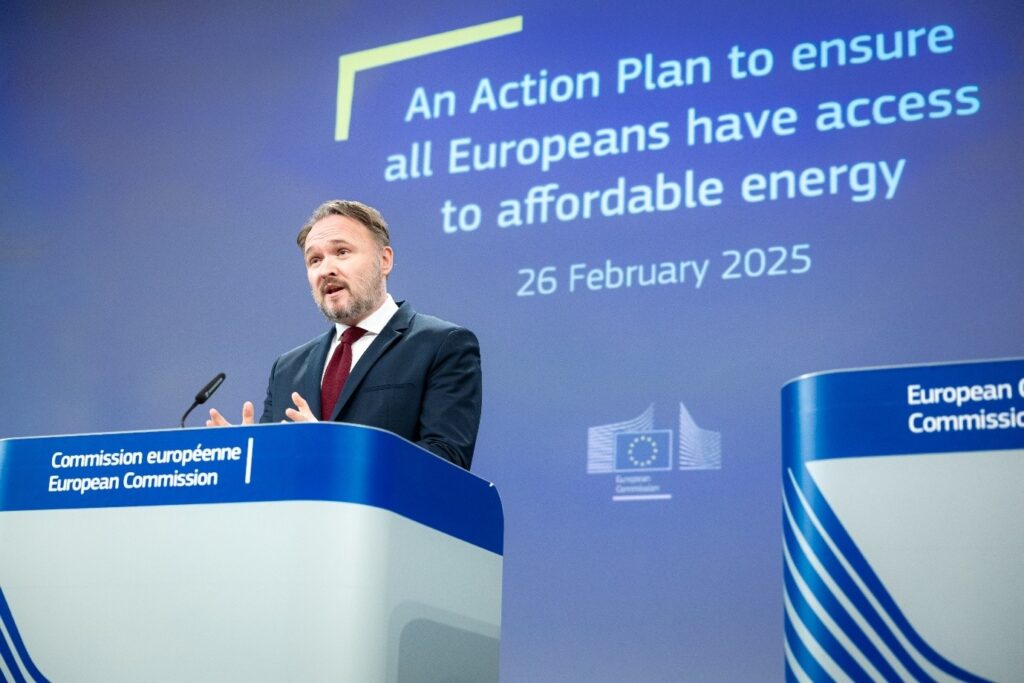Brussels, 26 February 2025 – The European Commission (EC) published its long-awaited proposal for a Clean Industrial Deal that should make Europe’s industry competitive again with a clear focus on supporting the clean tech and energy-intensive industries. Given the relevance of energy prices for Europe’s competitiveness the proposal was accompanied by an Action Plan for Affordable Energy.
The Affordable Energy Prices Action Plan in detail
The Action Plan presented by the EC has a clear objective on tackling high energy prices for industries and citizens considered as undermining factors for the EU’s global standing and international competitiveness. The measures proposed by the non-legislative text should (1) lower bills in the short term, (2) fast-tracking much needed cost-saving structural reforms and (3) reinforcing energy system to mitigate future price-shocks.
Grids are featured high in the Action Plan, notably with proposals to reduce permitting times, giving guidance on tariff methodologies to incentivize flexibility, new rules on demand response and a future Citizens Energy Package. The text announces the installation of a tripartite contract for affordable energy including grids to improve predictability and visibility of production needs to scale up capacity and support de-risking of investments, while National Energy and Climate Plans (NECPs) are intended to be developed into strategic investment plans that foster investment predictability.
The Clean Industrial Deal in detail
The Communication identifies and addresses six business drivers: (1) Affordable energy ; (2) Lead markets; (3) Financing; (4) Circularity and access to materials; (5) Global markets and international partnerships; (6) Skills. Horizontal enablers, already identified in the Competitiveness Compass published in January 2025, are reiterated, including the cutting of red tape, the exploitation of the Single Market’s scale, the promotion of quality jobs and a better coordination of policies at EU and national level.
Although not very present in the Communication, grids are identified as relevant for the EU’s resilience. Insufficient grid infrastructure is seen as “structural inefficiency in the electricity system” driving high energy costs. The Communication announces several initiatives including:
- A Grids Manufacturing Package for the European supply chain will provide counter guarantees and other de-risking support to manufacturers of grid components. Additional funds for EU-made clean manufacturing (incl. MFF) should be mobilised as well as private investments under the InvestEU Regulation.
- The revision of the Public Procurement Framework (Q4 2026) will include minimum EU content requirement for public procurement of strategic sectors.
- The Industrial Decarbonisation Accelerator Act (Q4 2025) will introduce resilience, sustainability and origin criteria in public procurement processes and address permitting bottlenecks related to energy and industrial decarbonisation building on the Renewable Energy Directive, the Critical Raw Material Act and the Net-Zero Industrial Act (NZIA).
- The upcoming Competitiveness Fund will support sustainable investments under the next Multi-Financial Annual Framework (MFF), focusing on “projects with a European added value”. Significant investments will be allocated in the “infrastructure and connectivity required to complete the Energy Union”.
- The Union of Skills should provide sectoral skills reinforcement in strategic industries linked to the Clean Industrial Deal (grids not explicitly mentioned).


